As elementary teachers, we know that the first week of school can set the tone for the entire school year. With so much to cover in the first days of school, particularly in a primary classroom, it can feel a little bit overwhelming! If you can relate, keep scrolling to read my top tips for the first week of school. These seven tips will help you prioritize your back-to-school planning and set the tone for a great school year!

My first tip for the first week of school actually takes place before the beginning of the year. If you don’t send a welcome back letter to your students, I highly recommend giving it a try! There is no “ideal” time to send this letter since every school district has different timelines for class lists and summer communication. When possible, sending a welcome back letter is a helpful tool for setting the tone for the first week of school.
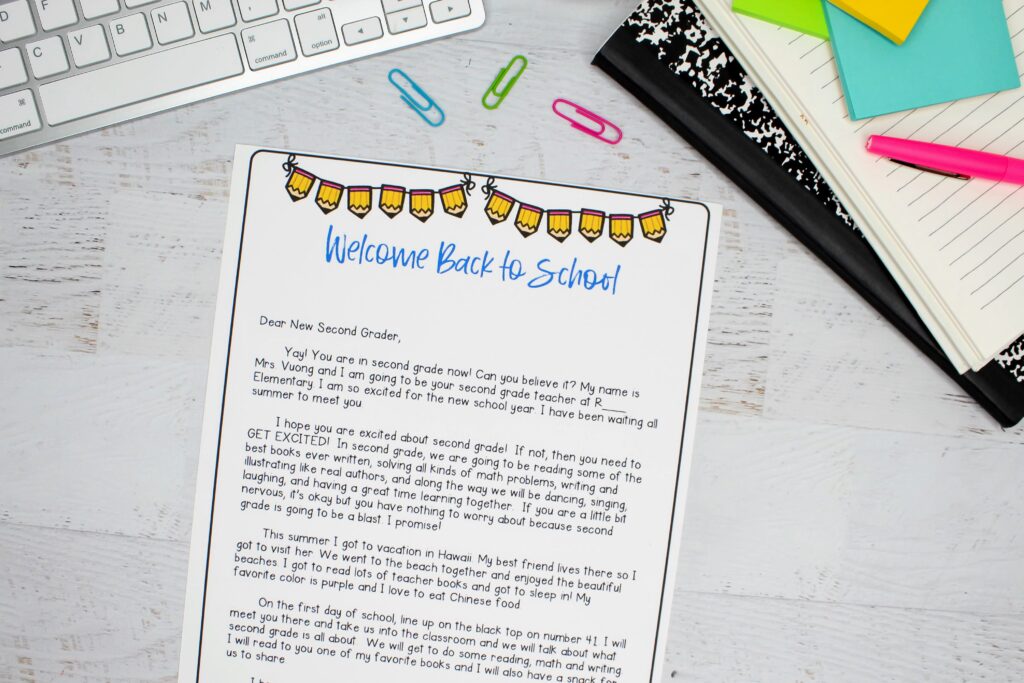
Before welcoming students to the classroom, take the time to set up your learning space for a successful start to the school year. Think about all of the procedures that will take place in your room: Turning in papers, sharpening pencils, partner work, centers, lining up, and more. Make sure that your classroom has functional solutions for all of these procedures.

The first week of school is when the functionality of your classroom is put to the test! As you go through each of the first few days of school, make note of any adjustments that you need to make to the classroom space after the students leave for the day.
One of the most important tasks during the first week of school is to learn about your students. You have all year to get to know the children in your class, but I think it’s important to start this process as soon as possible. Understanding your students’ goals, interests, and expectations can inform your planning and teaching for the rest of the school year.
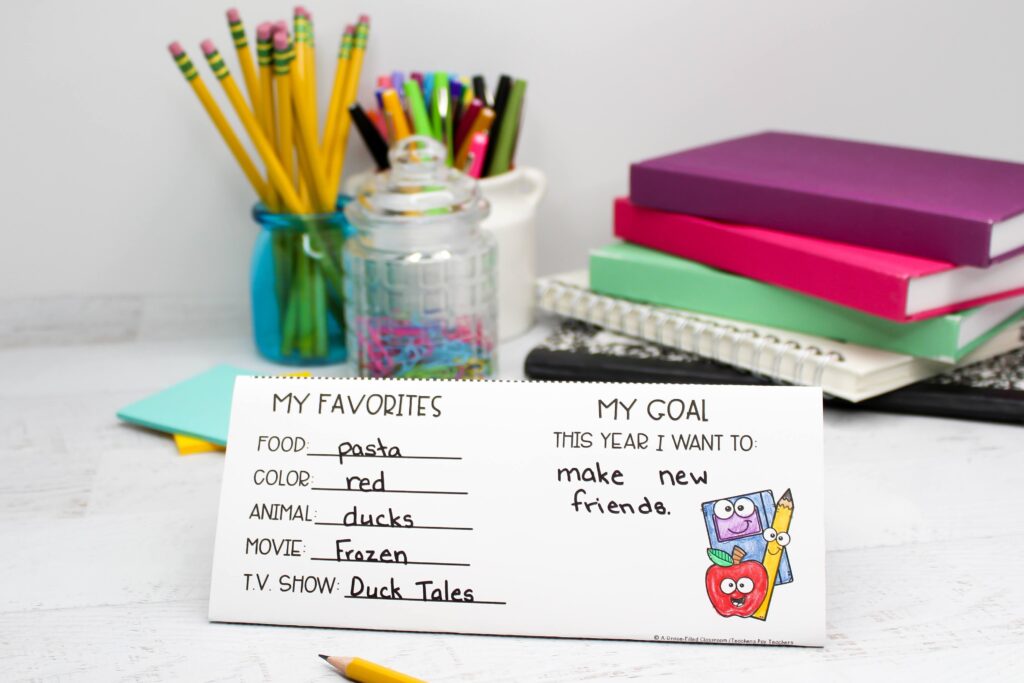
This also helps to build a relationship of trust since students can feel that you genuinely care to know more about them. You can draw on this relationship of trust as you work through challenging behaviors in the classroom.
Take the time in the first week of school to teach and practice the rules and procedures your students need to know. Intentionally plan your week so that these rules and procedures are sprinkled throughout the first few days of school. By doing it this way, students won’t become confused by a mental overload of things to remember and they can learn procedures as they need them.
Even when you make a plan for when and how you want to go over a particular rule or procedure, you might need to switch things up for one reason or another. I suggest using a checklist that contains all of the rules and procedures you want to discuss with your class. This will help you keep track of the ones you have already gone over and the ones you still need to teach.
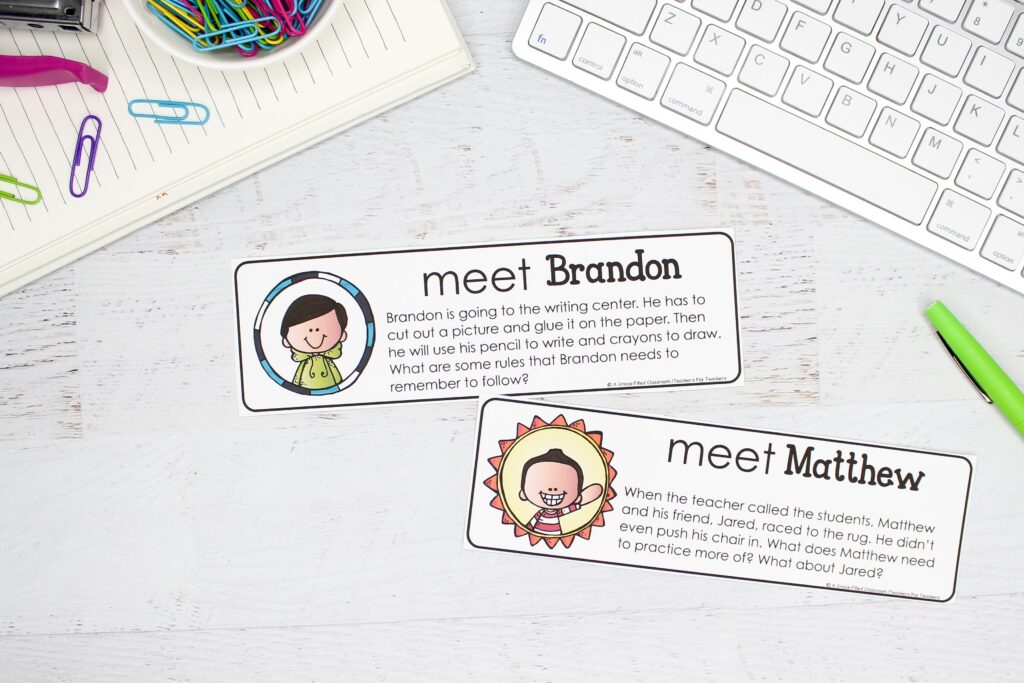
One way that I love to review and practice rules and procedures is with scenario cards. With this activity, students listen to scenarios of fictional children who could use some extra practice with certain rules and procedures. Students enjoy discussing these scenarios and providing suggestions to the fictional children.
Students need to feel that their classroom is a safe space to share ideas and participate in learning activities. Building a classroom community is essential for creating this safe space! During the first week of school, use icebreakers and getting-to-know-you activities that will help students interact with each other and see what they have in common. I have used All About Me bags, student interviews, and find-a-friend activities in the past, just to name a few.
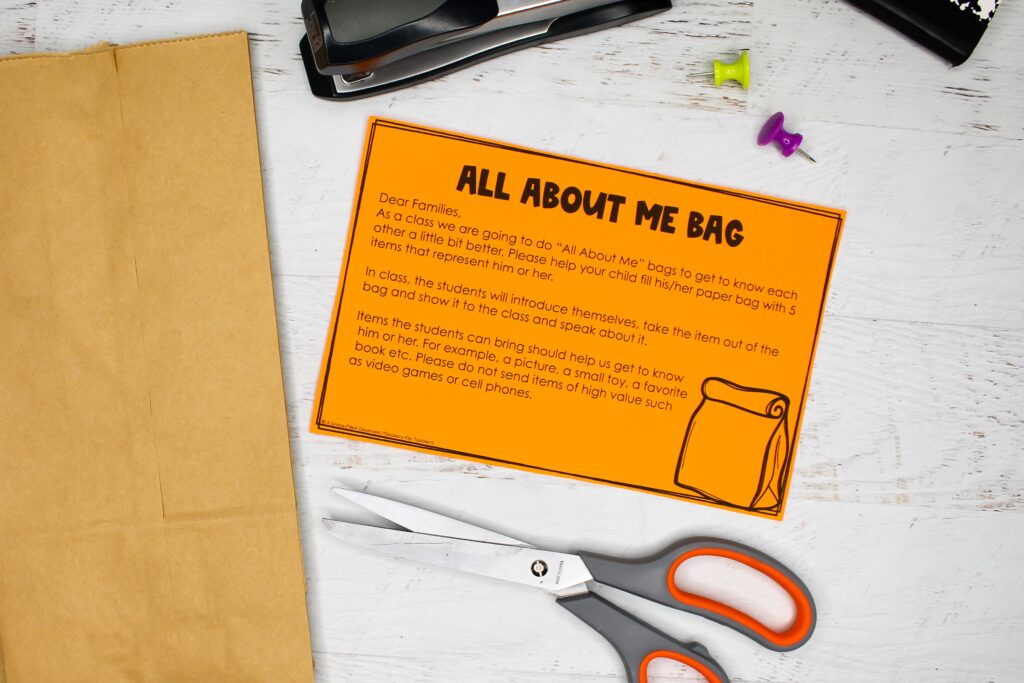
Whether or not you plan to use daily take-home folders, I suggest having something to send home with students each night during the first week of school. With so much for students to remember, it can be tricky for them to recall the day when parents try to ask them what they did at school. When students have a tangible reminder of their school day in their backpacks, it can help spark conversation at home. This small thing can make a big difference in creating a habit of discussing the school day at home, which can help families feel more involved.

You can send home positive notes, goal-setting sheets, back-to-school books, or even completed coloring pages and learning activities. Choose anything that can help students talk to their parents about what they did at school!
The first week of school is a time when careful planning and flexibility are equally important. Some activities might take longer while other activities will leave you with extra pockets of time. I like to have my daily plans written out in detail to make sure we fit in all of the important activities for the beginning of the year. I have found that it’s easier to be flexible when I have a clear picture of the week’s major priorities in a detailed plan.
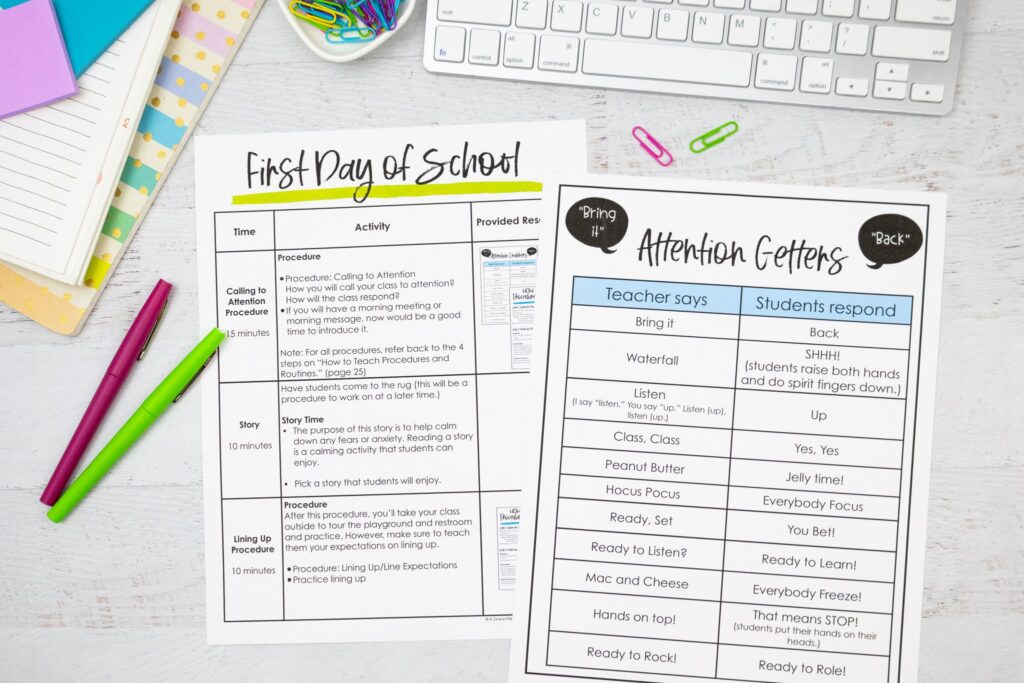
I used to start the planning process for the first week of school by trying to remember what I did the year before. Over time, I started writing everything down until I had all of my first week of school ideas saved in one place. Then I decided that if I needed these reminders, other teachers might like them as well!
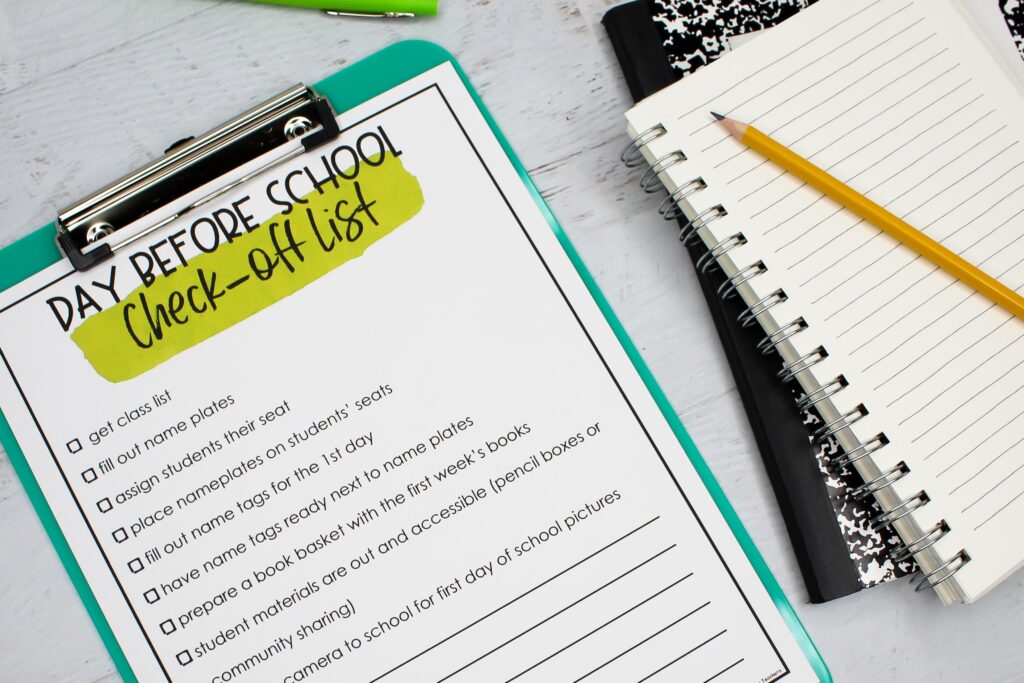
The end result is a large resource that will take the stress out of preparing for the first week of school. You’ll find everything you need to follow the advice in this post and more! If you’d like to take a closer look at everything included in this resource, you can find it in my shop or on Teachers Pay Teachers.

If you’d like to return to this post later, add this pin to your favorite teaching board on Pinterest. You’ll be able to find these tips and resources when you need them quickly.
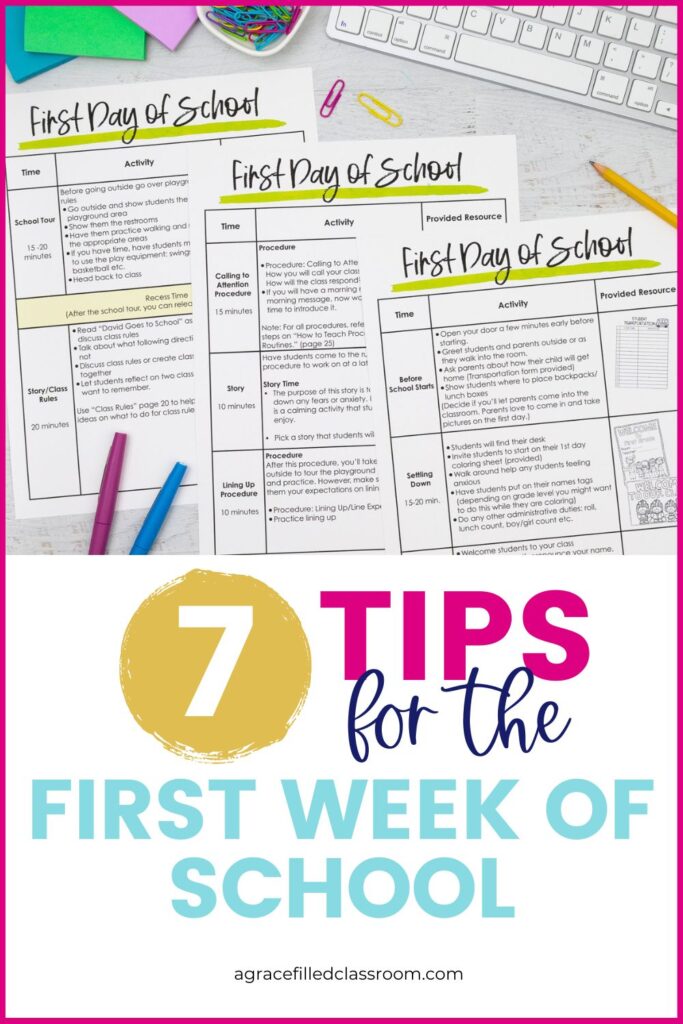
 Teaching in a primary classroom can be overwhelming! Have you ever wondered… How can I meet all the demands of teaching and still make sure I am teaching my students to be good world citizens? How can …
Teaching in a primary classroom can be overwhelming! Have you ever wondered… How can I meet all the demands of teaching and still make sure I am teaching my students to be good world citizens? How can … 
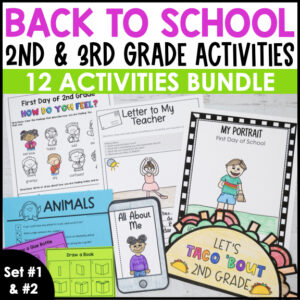
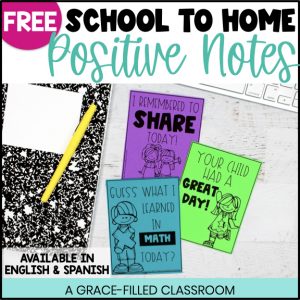
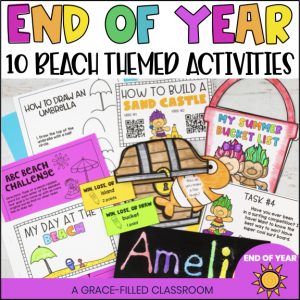
A Grace-Filled Classroom is a participant in the Amazon Services LLC Associates Program, an affiliate advertising program designed to provide a means for sites to earn advertising fees by advertising and linking to Amazon.com.
Copyright © 2024 A GRACE-FILLED CLASSROOM | Terms and Conditions